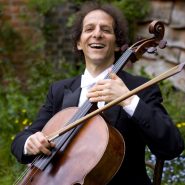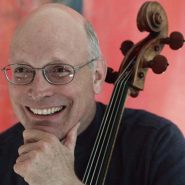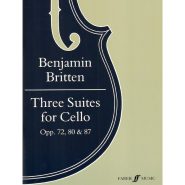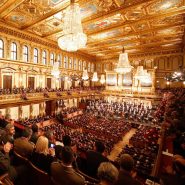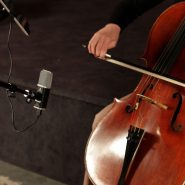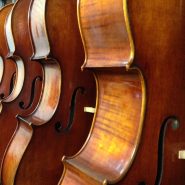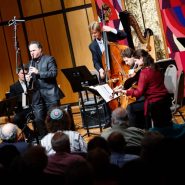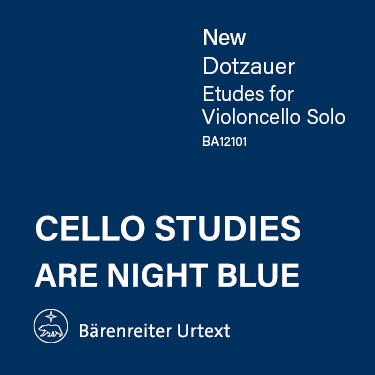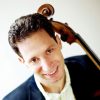
Author: Aron Zelkowicz
With a career encompassing a broad range of activities as a cellist, performer, teacher, and administrator, Aron Zelkowicz has cultivated a repertoire both classical and ethnic, familiar and obscure. He recently completed his tenth season as the Founder and Director of the Pittsburgh Jewish Music Festival, which presents rare and diverse works from Jewish musical traditions to Pittsburgh audiences every spring. The Festival has featured renowned ensembles and guest artists from the orchestral, chamber, early music, rock, and world music genres in innovative and thematic programs. Under his guidance the Festival has commissioned several works from major composers, received major grants and mainstream critical acclaim, and has been featured in full-length radio and cable television broadcasts. In 2013 The Pittsburgh Tribune-Review noted Dr. Zelkowicz’s “impressive” directorial debut of a new production of the chamber opera “The Dybbuk” by Ofer Ben-Amots.
As a chamber and orchestral musician, Dr. Zelkowicz has performed at the Tanglewood, Banff, Aspen, Sarasota, Chautauqua, Colorado, and Sunflower music festivals, the New York String Orchestra and Juilliard Quartet Seminars, with members of the Emerson and Cleveland Quartets, and on European and American tours with the Pittsburgh Symphony Orchestra. He enjoys relating directly to both adults and children with outreach programs and personal introductions to his concerts, as he has done with the Charleston Symphony Orchestra in South Carolina, the Proteus Ensemble, Piccolo Spoleto’s Spotlight chamber music series, as well as his own Pittsburgh Jewish Music Festival. As a teacher and coach to young string players, he has given master classes at universities and colleges throughout the U.S. and served on the faculties of Point Counterpoint Chamber Music Camp, the Brevard Music Center, and the North Carolina Governor’s School.
A native of Ottawa, Canada, Aron Zelkowicz grew up in Pittsburgh and received degrees from the Eastman School of Music, Indiana University, and SUNY Stony Brook, where his teachers included Anne Martindale Williams, Paul Katz, Steven Doane, Janos Starker, and Colin Carr.
By Aron Zelkowicz December 8, 2013
Subjects Interviews, Repertoire
Tags Aron, Britten, Britten Cello Suites, Britten Cello Symphony, cello, cellobello, chant, conducting, improvisation, interview, Introduzione, Isserlis, manuscript, multiple versions, performance, premiere, recording, Rostropovich, Russian Orthodox Liturgy, Shostakovich, Sonata, Steven, Tavener, third suite, Zelkowicz
By Aron Zelkowicz November 21, 2013
Subjects Interviews, Repertoire
Tags analysis, Aron, Bach, Benjamin Britten, Britten, cello, cello suites, cellobello, Colin Carr, composition, differences in performance, Growth, interview, live recording, live-performance, Menlo, Menuhin School, microphones, Music@Menlo, performance, recordings, Rostropovich, solo debut album, Suites, Zelkowicz
By Aron Zelkowicz November 12, 2013
Subjects Repertoire
By Aron Zelkowicz November 12, 2013
Subjects Interviews, Repertoire
Tags Aron, audience, Benjamin Britten, Britten, Britten Cello Suites, cello, cello suites, cellobello, complete suites, discoveries, discovery, editorial markings, fingerings, inflection, interview with Steven Doane, movements, performance, perspective, phrasing, recital, recitals, recordings, Sound, Steven Doane, Suites, Zelkowicz
By Aron Zelkowicz November 12, 2013
Subjects Repertoire
Tags 1971, Aron, Benjamin Britten, Britten solo cello suites, canto, cello, cellobello, centenary, compelling interpreters, effect, Effective, genius, grandiose, indulge, Janos Starker, memory, movements, Mstislav Rostropovich, navigation, non-verbal drama, opera, Performing, personality, pizzicati, silences, solo cello suites, solo suites, Suites, Zelkowicz
By Aron Zelkowicz November 9, 2012
Tags acoustics, Aron, audience, cello, cellobello, challenges, Dvorak, endpin, gestures, illness, live performances, musicians, orchestras, perspective, stage, struggle, themes, tour, Zelkowicz
By Aron Zelkowicz January 19, 2012
Subjects Chamber Music
By Aron Zelkowicz September 23, 2011
Subjects Repertoire
By Aron Zelkowicz August 12, 2011
Subjects Chamber Music
By Aron Zelkowicz July 16, 2011
Subjects Artistic Vision
By Aron Zelkowicz May 11, 2011
Subjects Artistic Vision

